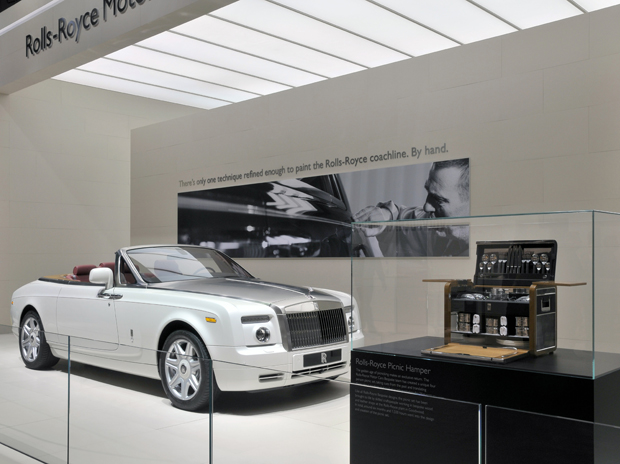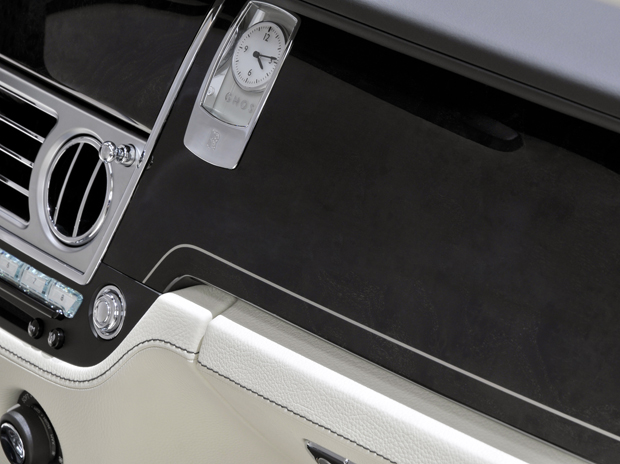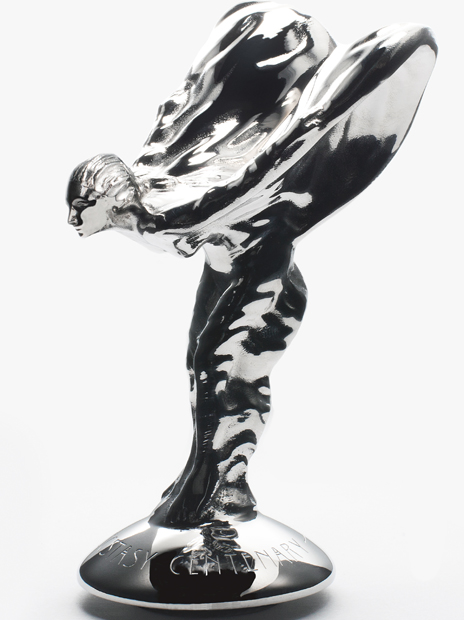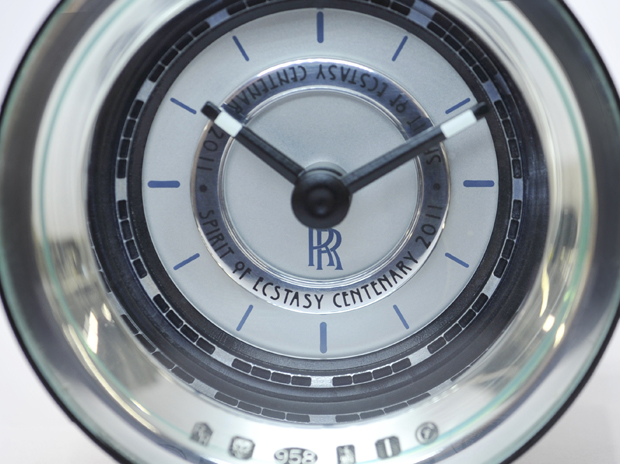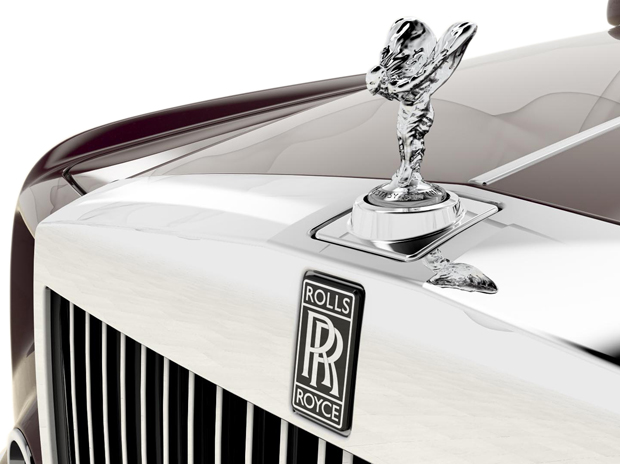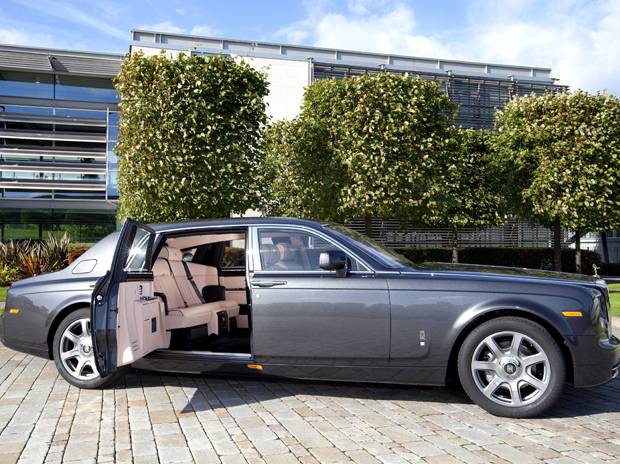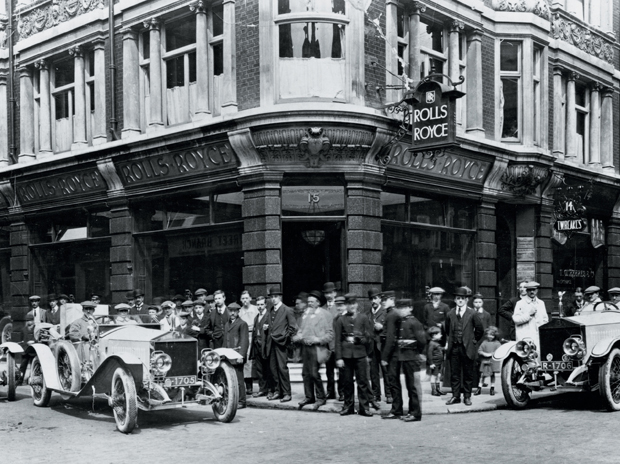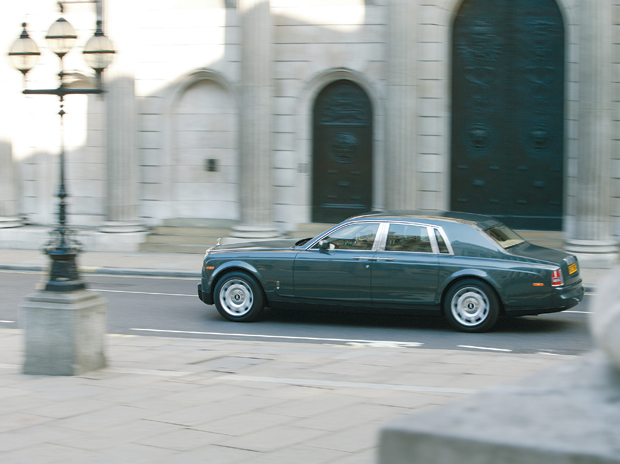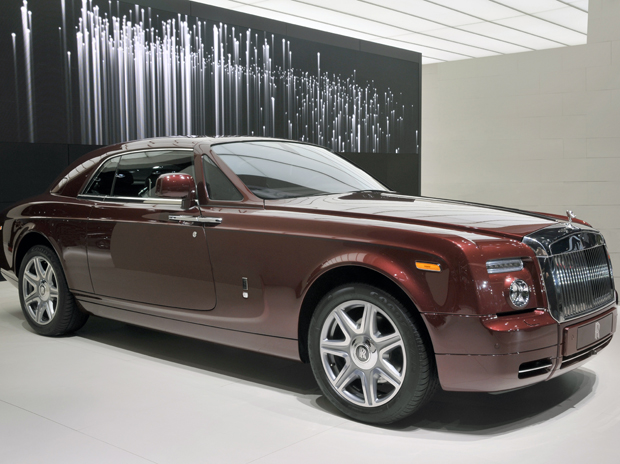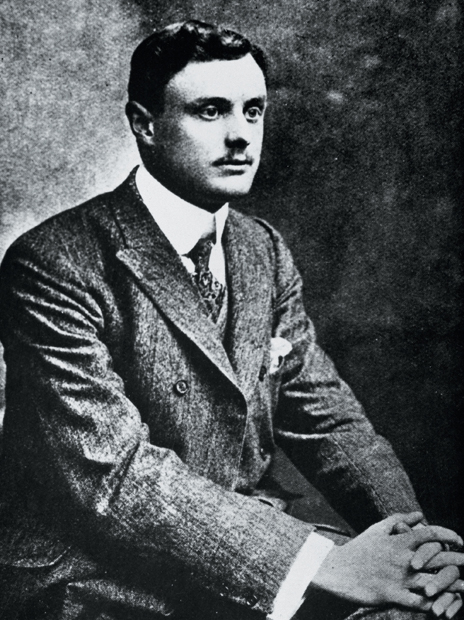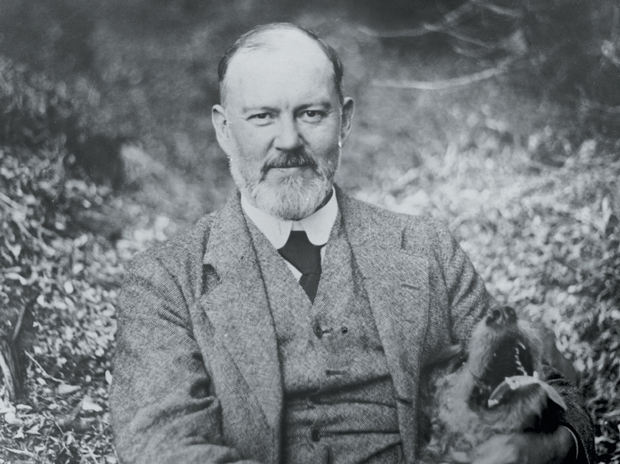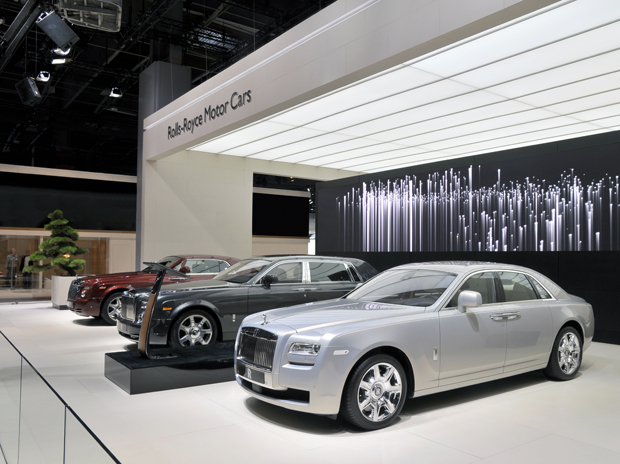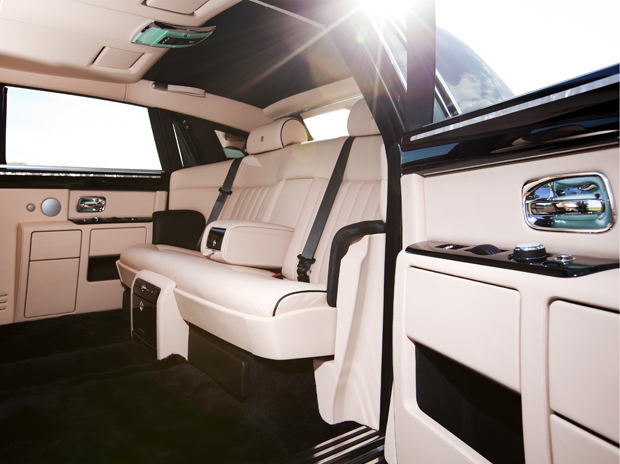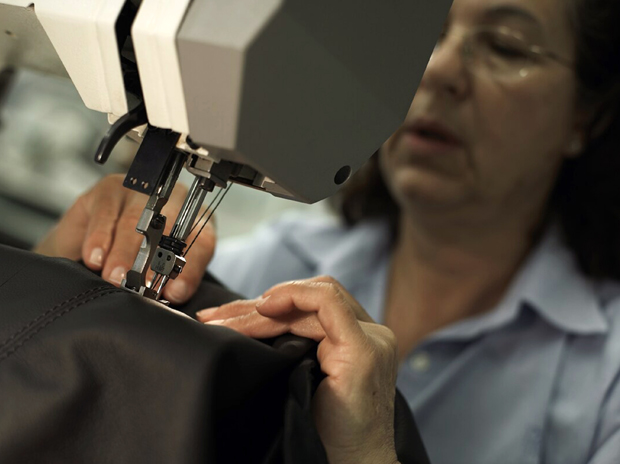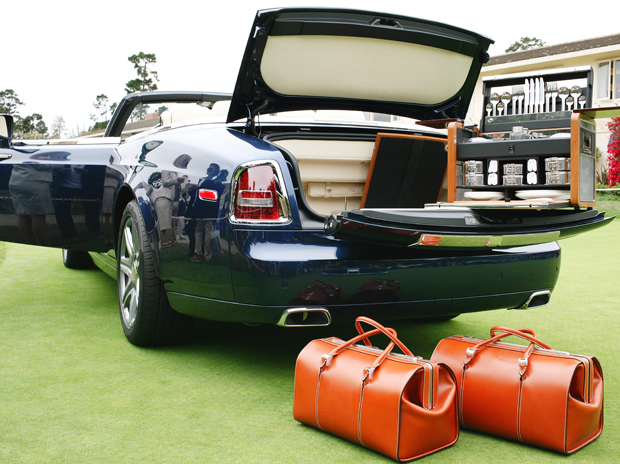From doorbells to the breaking of the sound barrier in a land vehicle (a staggering 763.04mph), via the Battle of Britain and the Beatles, the history of Rolls-Royce reads like an industrial, cultural and historical account of Great Britains fortunes from the Industrial Revolution to the present day.
Every company has a founder, a human story at its heart telling of its birth - every happenstance and slice of good luck shining like destiny in hindsight, that most selective of spotlights.
Rolls-Royce is the story of two men from radically different backgrounds, drawn together by a shared and prescient vision for the future of what was, at the time, a fledgling and revolutionary technology.
Racing has an incredibly narrow set of adjectival objectives: first, best, fastest. The race car drivers obsessive singularity of purpose views an automobile as four wheels on which one needs to be propelled from A to B as quickly and efficiently as possible.
Although an engineering graduate from Trinity College Cambridge, it was through racing that Charles Rolls became involved in the car industry. An accomplished motorist by the time he left university, this third son of Lord and Lady Llangattock set up his own sales and service depot in Fulham to fund his racing career, and by 1904 had already unofficially broken the World Land Speed Record.
Hitherto frustrated by the lack of British made cars, Rolls was introduced to Henry Royce through the peerless cars Royce had designed and manufactured in his factory in Manchester - himself dissatisfied with the poor engineering and performance of contemporary automobiles.
Born of relatively humble origins, Royce had outstanding natural ability as an engineer and had already established his first engineering company by the age of twenty one, designing and manufacturing small electrical components such as doorbells, switches and fuses. In fact Royces patented modifications of the bayonet light fitting are still in use to this day.
A third man, Claude Johnson, a major figure in the putative automobile industry - former secretary of what was to become the Royal Automobile Club and Rolls business partner - introduced Rolls and Royce. So important was he to the companys fortunes that he was to become known as the hyphen in Rolls-Royce.
On meeting in 1903, Rolls and Royce formed an almost instant rapport, and the two quickly set about refining Royces designs at his Manchester factory. When the first precision tooled, ultra-high performance, and elegantly commodious Rolls-Royce - the four cylinder Twenty - appeared at the 1904 Paris Salon, it was recognized as superior to anything else on the market.
From that moment, the company flourished, with its cars beating all rivals on the racetrack, in performance and reliability tests, and, in many eyes to the title of the best car in the world. That the slogan, coined by now Managing Director Claude Johnson, remains pegged to the Rolls-Royce brand today is testament to Royces inviolable principles of elegance borne on the highest performance and in the utmost luxury.
Rolls-Royce has released motor car after motor car that has gone on to become an automotive legend of its day; the Silver Ghost, the Phantom, 1960s icon the Silver Shadow, the Camargue, the Silver Spirit and the new Phantom launched in 2003 to coincide with the companys centenary. With their unique driving position (significantly higher than other cars), gracefully elongated curves, and effortless power, these cars still have the gravitas to pause conversation on high streets and turn heads at traffic lights. Such disparate and stellar characters as the Sultan of Brunei, Tsar Nicholas II, Alfred Nobel, Brigitte Bardot and Beatles John Lennon and Paul McCartney have all been noted Rolls-Royce owners.
Often the first thing to which the eye is drawn is the gleaming figure adorning the prows of this proudly English fleet, soaring above the authoritative grill of the trademark radiator - the Spirit of Ecstasy. Sculpted in silver, this beauty in flowing garb has outstretched arms and appears to be taking flight. She has become an unmistakable symbol of the freedom bestowed by wealth and power, and the class that neither guarantee.
It is with the Spirit of Ecstasy that we return to the human story behind this global brand. Reluctantly conforming to a fad for bonnet mascots and ornaments, Royce agreed to let artist Charles Sykes sculpt something worthy of his cars. Sykes was an illustrator at magazine The Car Illustrated, and had often used the owners personal assistant, the beautiful and formidable Eleanor Thornton, as his model for various illustrations. She also happened to previously have been Claude Johnsons secretary at the Motor Club of Great Britain.
Great mystery shrouds whether or not Thornton was the Spirit of Ecstasy - Thornton was killed when her ship was torpedoed in the Mediterranean during World War II, and not one of Royce, Johnson or Skyes ever divulged the truth.
Charles Rolls, by that time a vaunted aviator, died in 1910 whilst flying at the Bournemouth air show, the first British air casualty in history. This initially tragic association with flight has continued until the present day, with Rolls-Royce engines powering some of the most successful and recognized planes of the Twentieth Century, such as the Spitfire fighter plane - hero of the Battle of Britain.
That Rolls died airborne so early in the story of the company that still bears his name, his short life all the more poignant, somehow fits with the Spirit of Ecstasy - fearless, born to the heights of speed and luxury - that takes flight above these special machines whenever they take the road.
On February 6th this year, Rolls-Royce will mark the anniversary of its most famous statuette with a number of blue ribbon events. The highlight will perhaps be a procession of one hundred contemporary and vintage models through the Capital, paying homage to this most iconic of British engineering achievements, passing both Berkeley Square and Conduit Street in Fulham - the firms contemporary and original headquarters.
- Ben Stewart
Rolls-Royce Motor Cars
Website: www.rolls-roycemotorcars.com
Photo Credits: Rolls Royce 1, 2, 5: © Copyright Rolls-Royce Enthusiasts Club
Rolls Royce 6, 9, 14, 17, 20, 21: © Copyright Rolls-Royce Motor Cars LTD.
Rolls Royce 22, 24, 28, 30: © Copyright Rolls-Royce Motor Cars LTD.
Rolls Royce 33, 34: © Copyright Rolls-Royce Motor Cars LTD.
Every company has a founder, a human story at its heart telling of its birth - every happenstance and slice of good luck shining like destiny in hindsight, that most selective of spotlights.
Rolls-Royce is the story of two men from radically different backgrounds, drawn together by a shared and prescient vision for the future of what was, at the time, a fledgling and revolutionary technology.
Racing has an incredibly narrow set of adjectival objectives: first, best, fastest. The race car drivers obsessive singularity of purpose views an automobile as four wheels on which one needs to be propelled from A to B as quickly and efficiently as possible.
Although an engineering graduate from Trinity College Cambridge, it was through racing that Charles Rolls became involved in the car industry. An accomplished motorist by the time he left university, this third son of Lord and Lady Llangattock set up his own sales and service depot in Fulham to fund his racing career, and by 1904 had already unofficially broken the World Land Speed Record.
Hitherto frustrated by the lack of British made cars, Rolls was introduced to Henry Royce through the peerless cars Royce had designed and manufactured in his factory in Manchester - himself dissatisfied with the poor engineering and performance of contemporary automobiles.
Born of relatively humble origins, Royce had outstanding natural ability as an engineer and had already established his first engineering company by the age of twenty one, designing and manufacturing small electrical components such as doorbells, switches and fuses. In fact Royces patented modifications of the bayonet light fitting are still in use to this day.
A third man, Claude Johnson, a major figure in the putative automobile industry - former secretary of what was to become the Royal Automobile Club and Rolls business partner - introduced Rolls and Royce. So important was he to the companys fortunes that he was to become known as the hyphen in Rolls-Royce.
On meeting in 1903, Rolls and Royce formed an almost instant rapport, and the two quickly set about refining Royces designs at his Manchester factory. When the first precision tooled, ultra-high performance, and elegantly commodious Rolls-Royce - the four cylinder Twenty - appeared at the 1904 Paris Salon, it was recognized as superior to anything else on the market.
From that moment, the company flourished, with its cars beating all rivals on the racetrack, in performance and reliability tests, and, in many eyes to the title of the best car in the world. That the slogan, coined by now Managing Director Claude Johnson, remains pegged to the Rolls-Royce brand today is testament to Royces inviolable principles of elegance borne on the highest performance and in the utmost luxury.
Rolls-Royce has released motor car after motor car that has gone on to become an automotive legend of its day; the Silver Ghost, the Phantom, 1960s icon the Silver Shadow, the Camargue, the Silver Spirit and the new Phantom launched in 2003 to coincide with the companys centenary. With their unique driving position (significantly higher than other cars), gracefully elongated curves, and effortless power, these cars still have the gravitas to pause conversation on high streets and turn heads at traffic lights. Such disparate and stellar characters as the Sultan of Brunei, Tsar Nicholas II, Alfred Nobel, Brigitte Bardot and Beatles John Lennon and Paul McCartney have all been noted Rolls-Royce owners.
Often the first thing to which the eye is drawn is the gleaming figure adorning the prows of this proudly English fleet, soaring above the authoritative grill of the trademark radiator - the Spirit of Ecstasy. Sculpted in silver, this beauty in flowing garb has outstretched arms and appears to be taking flight. She has become an unmistakable symbol of the freedom bestowed by wealth and power, and the class that neither guarantee.
It is with the Spirit of Ecstasy that we return to the human story behind this global brand. Reluctantly conforming to a fad for bonnet mascots and ornaments, Royce agreed to let artist Charles Sykes sculpt something worthy of his cars. Sykes was an illustrator at magazine The Car Illustrated, and had often used the owners personal assistant, the beautiful and formidable Eleanor Thornton, as his model for various illustrations. She also happened to previously have been Claude Johnsons secretary at the Motor Club of Great Britain.
Great mystery shrouds whether or not Thornton was the Spirit of Ecstasy - Thornton was killed when her ship was torpedoed in the Mediterranean during World War II, and not one of Royce, Johnson or Skyes ever divulged the truth.
Charles Rolls, by that time a vaunted aviator, died in 1910 whilst flying at the Bournemouth air show, the first British air casualty in history. This initially tragic association with flight has continued until the present day, with Rolls-Royce engines powering some of the most successful and recognized planes of the Twentieth Century, such as the Spitfire fighter plane - hero of the Battle of Britain.
That Rolls died airborne so early in the story of the company that still bears his name, his short life all the more poignant, somehow fits with the Spirit of Ecstasy - fearless, born to the heights of speed and luxury - that takes flight above these special machines whenever they take the road.
On February 6th this year, Rolls-Royce will mark the anniversary of its most famous statuette with a number of blue ribbon events. The highlight will perhaps be a procession of one hundred contemporary and vintage models through the Capital, paying homage to this most iconic of British engineering achievements, passing both Berkeley Square and Conduit Street in Fulham - the firms contemporary and original headquarters.
- Ben Stewart
Rolls-Royce Motor Cars
Website: www.rolls-roycemotorcars.com
Photo Credits: Rolls Royce 1, 2, 5: © Copyright Rolls-Royce Enthusiasts Club
Rolls Royce 6, 9, 14, 17, 20, 21: © Copyright Rolls-Royce Motor Cars LTD.
Rolls Royce 22, 24, 28, 30: © Copyright Rolls-Royce Motor Cars LTD.
Rolls Royce 33, 34: © Copyright Rolls-Royce Motor Cars LTD.
Rolls-Royce





